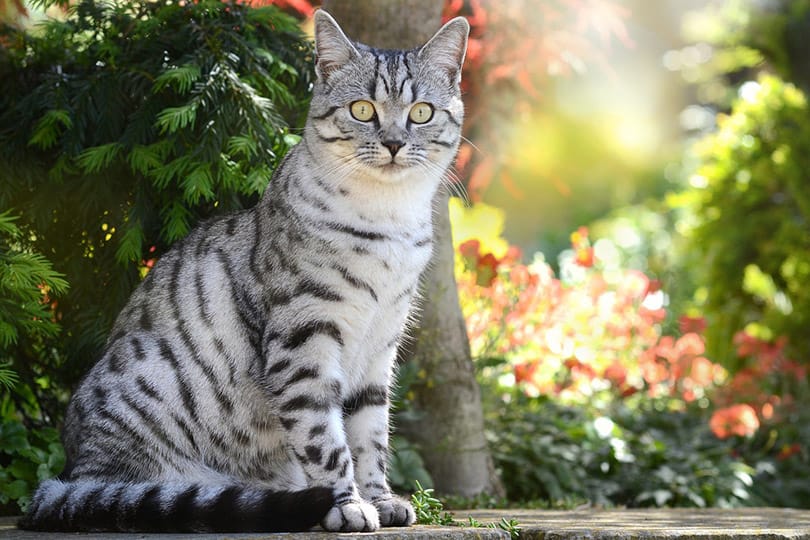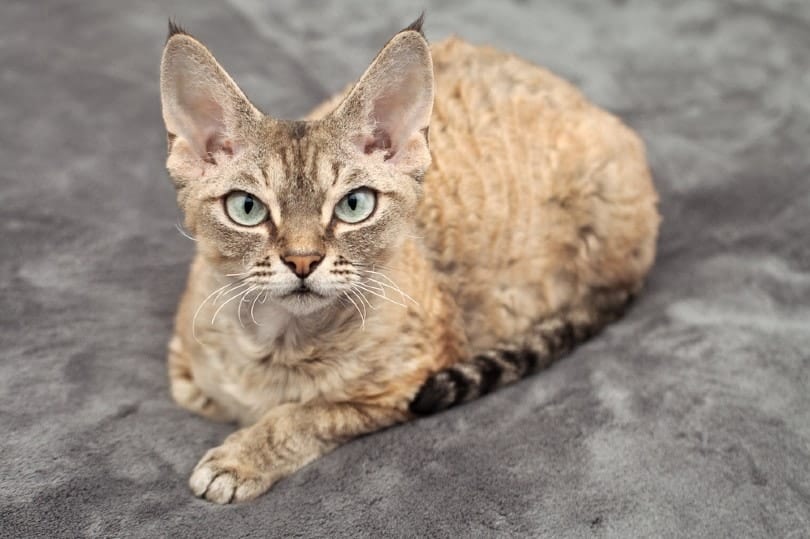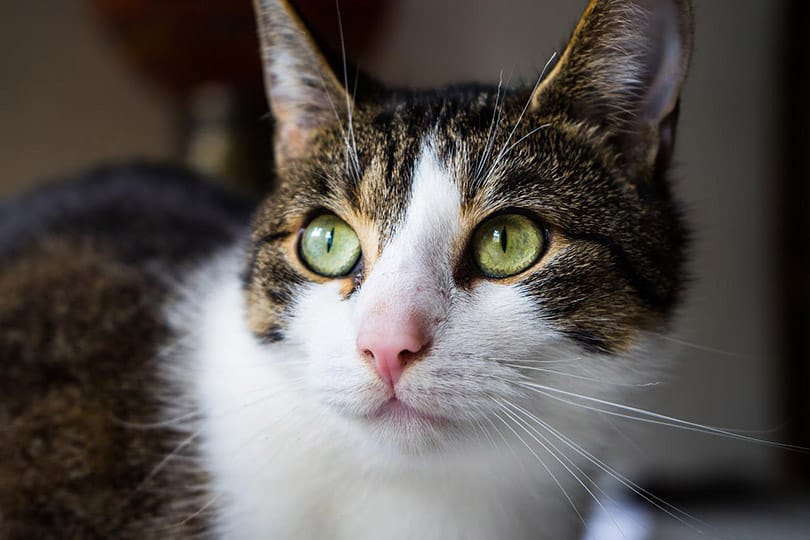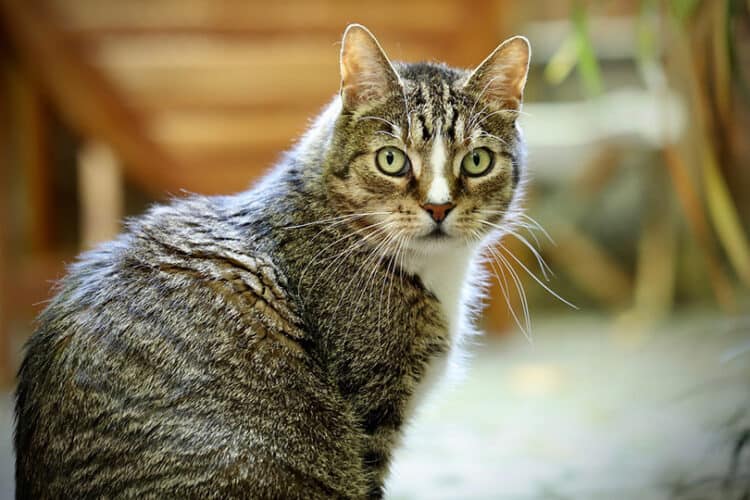Being a cat lover with cat allergies is a tough situation. Staying away from cats or not owning one may be impossible for some people. The search for hypoallergenic cats is what usually follows because people feel that they can have the best of both worlds: a cat that doesn’t trigger their allergies.
Are domestic shorthair cats a hypoallergenic option? No, but a truly hypoallergenic cat doesn’t exist — there’s no such thing as a hypoallergenic cat or dog. However, some breeds may be more hypoallergenic than others. For this to make sense, let’s look more at cat allergies and the science behind them.
What Are Cat Allergies?

Around 10% of the population in the United States has some sort of pet allergy, and cat allergies are the most common. In fact, they are twice as common as dog allergies. But when someone is allergic to cats, what are they actually allergic to?
It’s not the cat’s hair that causes allergic reactions, though this is commonly thought to be the case. Fel d 1 is a thermostable protein that is found in cats’ saliva, skin, sebaceous glands, and hair. This protein is the major allergen of domestic cats. One common trigger is dander. Flakes of dead skin fall off the cat and get trapped in their hair. This is known as dander, and it gets spread around the house by the cats as they shed their hair. It’s not the hair itself that causes the allergies, but the dander on it. It contains the Fel d 1 protein from the glands in the skin.
When the Fel d 1 protein enters a person’s body, either by skin contact or inhalation, the body reacts to it as a foreign substance. In people with allergies, this protein is regarded as an invader. The immune system will then send antibodies to protect them against it, considering it to be harmful even though it’s not. The antibodies can cause inflammation of the nasal passages and lungs. In serious cases, allergic reactions can trigger sinus infections and asthma.
Domestic Shorthair Cats & Dander
Domestic shorthair cats are not a specific breed. This is a term used to describe shorthaired cats of varied ancestry. They all produce dander, so they all produce allergens that can make allergy sufferers miserable. However, depending on the cat’s lineage, some may produce fewer allergens than others.
Even hairless cats, like the Sphynx, produce dander and carry the Fel d 1 protein. But you may notice that your allergies act up less around hairless cats. Since they don’t shed any hair and dander gets spread around the house by shedding hair, there is less of it around.
All cats produce dander, but not everyone is allergic to it. Domestic shorthair cats are not hypoallergenic, but not everyone will have allergic reactions to them.
Cats That Are the Most Hypoallergenic

If you’re allergic to cats and are looking to adopt the most hypoallergenic cat possible, here is a list recommended by PetMD. Remember that no cat is truly hypoallergenic, though, and your allergies may still be triggered. But if your allergy to cats is minor, you may be affected less by the following breeds:
- Devon Rex
- Cornish Rex
- Javanese
- Sphynx
- Balinese
- Oriental Shorthair
- Russian Blue
- Bengal
- Colorpoint Shorthair
- Siberian
Symptoms of Cat Allergies
Many people with cat allergies experience coughing, sneezing, runny nose, irritated eyes, itchy skin, and rashes on the body. Asthma attacks may be triggered in people with asthma. Some people are so allergic to cats that they go into anaphylaxis, which can make breathing difficult to impossible and can send the body into shock.
Cat allergy reactions can be life threatening if they are severe enough. If you’re considering sharing your home with a cat and you’re allergic to them, make sure your symptoms are mild and won’t put you in danger.
Even if you visit a house that has cats and you don’t come into contact with them, any dander and allergens will be in the rugs, linens, furniture, clothing, and surfaces that you do contact. Allergic reactions are still possible even if you’re not near the cat.
Owning a Domestic Shorthair Cat

If you have cat allergies and want to own a domestic shorthair cat, that’s completely understandable. Sometimes that cute kitten is hard to resist! Here are a few things that you can do to help make your living situation manageable and easier for both of you.
First, if you suffer from severe allergic reactions, talk to your doctor about what you can do to help manage them. Medications, allergy shots, or an epinephrine injection pen may be necessary for you to live with a cat.
Your home should not have any rugs or carpets because these trap dander and allergens. Your furniture and floor should be vacuumed daily, preferably by someone without a cat allergy.
Always wash your hands after petting or playing with your cat. You should also wash them after feeding your cat and cleaning their litter box. Any time that you might come into contact with their dander, wash!
Bathe your cat once a month to keep their dander and allergen buildup low. Consider using an air purifier to trap allergens floating in the air before you can breathe them in.
Regularly brush your cat to remove their dead hair and reduce the amount of fur that they shed around the home.
Final Thoughts
Domestic shorthair cats are not hypoallergenic, but no cat truly is. If you’d like to have a cat even though you’re allergic, certain breeds may trigger your allergies less. There are also ways that you can mitigate the spread of dander and allergens so you may not have to suffer as much.
Featured Image Credit: Pixabay














